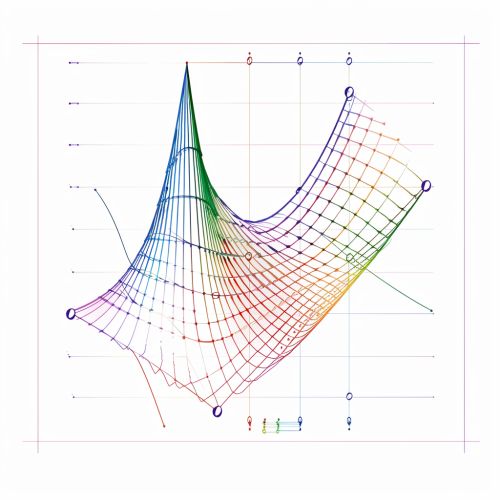Chebyshev Function: Difference between revisions
(Created page with "== Introduction == The Chebyshev function, named after the Russian mathematician Pafnuty Lvovich Chebyshev, is a function in number theory that appears in the prime number theorem. It is used to study the distribution of prime numbers and is defined in terms of the von Mangoldt function. <div class='only_on_desktop image-preview'><div class='image-preview-loader'...") |
No edit summary |
||
| Line 3: | Line 3: | ||
The Chebyshev function, named after the Russian mathematician [[Pafnuty Chebyshev|Pafnuty Lvovich Chebyshev]], is a function in [[Number Theory|number theory]] that appears in the [[Prime Number Theorem|prime number theorem]]. It is used to study the distribution of [[Prime Number|prime numbers]] and is defined in terms of the [[Von Mangoldt Function|von Mangoldt function]]. | The Chebyshev function, named after the Russian mathematician [[Pafnuty Chebyshev|Pafnuty Lvovich Chebyshev]], is a function in [[Number Theory|number theory]] that appears in the [[Prime Number Theorem|prime number theorem]]. It is used to study the distribution of [[Prime Number|prime numbers]] and is defined in terms of the [[Von Mangoldt Function|von Mangoldt function]]. | ||
[[Image:Detail-78849.jpg|thumb|center|A graph showing the Chebyshev function.]] | |||
== Definition == | == Definition == | ||
Revision as of 00:58, 16 May 2024
Introduction
The Chebyshev function, named after the Russian mathematician Pafnuty Lvovich Chebyshev, is a function in number theory that appears in the prime number theorem. It is used to study the distribution of prime numbers and is defined in terms of the von Mangoldt function.

Definition
The Chebyshev function is denoted by ψ(x) and is defined as the sum of the logarithm of prime powers p less than or equal to x:
ψ(x) = ∑ log p,
where the sum is over all prime powers p ≤ x.
This function can also be expressed using the von Mangoldt function Λ(n), which is defined as log p if n is a power of a prime p, and 0 otherwise. The Chebyshev function can then be written as:
ψ(x) = ∑ Λ(n),
where the sum is over all natural numbers n ≤ x.
Properties
The Chebyshev function has several important properties that make it useful in the study of prime numbers. These include:
- The function is increasing. This is because the sum is over prime powers, and the number of prime powers less than or equal to x increases as x increases.
- The function is non-negative. This follows from the fact that the logarithm of any prime number is positive.
- The function is not continuous. It jumps at each prime power, with the size of the jump being equal to the logarithm of the prime.
- The function is related to the prime counting function π(x) by the relation:
ψ(x) = π(x) log x + O(x),
where O(x) is the big O notation indicating that the error term grows slower than x.
Applications
The Chebyshev function is used in the proof of the prime number theorem, which states that the number of primes less than or equal to x is approximately x / log x. The function ψ(x) is used to approximate the sum of the logarithms of the primes less than or equal to x, which is closely related to the number of primes.
The function is also used in the study of the Riemann zeta function and the Riemann hypothesis, two central topics in analytic number theory. The explicit formulas for these functions involve the Chebyshev function, and the properties of ψ(x) are used to derive important results about the distribution of prime numbers.
